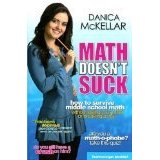My son Sergei brought back the Flip-Flop game from Canada/USA Mathcamp, and now I teach it to my students. This game trains students in the multiplication table for seven and eight. These are the most difficult digits in multiplication. This game is appropriate for small kids who just learned the multiplication table, but it is also fun for older kids and adults.
This is a turn-based game. In its primitive simplification kids stand in a circle and count in turn. But it is more interesting than that. Here’s what to say and do on your turn, and how the game determines who is next.
First I need to tell you what to say. On your turn, say the next number by default. However, there are exceptions when you have to say something else. And this something else consists of flips and/or flops.
So what are flips? Flip is related to seven. If a number is divisible by seven or has a digit seven, instead of saying this number, we have to say “flip” with multiplicities. For example, instead of 17 we say “flip” because it contains one digit seven. Instead of 14 we say “flip”, because it is divisible by seven once. Instead of 7 we say “flip-flip”, as it is both divisible by seven and has a digit seven. Instead of 49, we say “flip-flip” as 49 is divisible by the square of seven. Instead of 77 we say “flip-flip-flip” as it has two digits seven and is divisible by seven once.
Flop relates to eight the same way as flip relates to seven. Thus, instead of 16 we say “flop” as it is divisible by eight; instead of 18 we say “flop” as it contains the digit eight; and for 48 we say “flop-flop” as it is both divisible by eight and contains the digit eight.
A number can relate to seven and eight at the same time. For example 28 is divisible by seven and contains the digit eight. Instead of 28 we say “flip-flop”. The general rule is that all flips are pronounced before all flops. For example, instead of 788 we will say “flip-flop-flop-flop” as it is divisible by eight and contains the digit seven once and the digit eight twice.
The sequence of natural numbers in the flip-flop version starts as the following: 1, 2, 3, 4, 5, 6, flip-flip, flop-flop, 9, 10, 11, 12, 13, flip, 15, flop, flip, flop, 19, 20, flip, 22, 23, flop, 25, 26, flip, flip-flop, 29, 30, 31, flop, 33, 34, flip, 36, flip, flop, 39, flop, 41, flip, 43, 44, 45, 46, flip, flop-flop, flip-flip, 50, 51, 52, 53, 54, 55, flip-flop, flip, flop, 59, 60, 61, 62, flip, flop-flop, 65, 66, flip, flop, 69, flip-flip, flip, flip-flop, flip, flip, flip, flip, flip-flip-flip, flip-flop, flip, flop-flop, flop, flop, flop, flip-flop, flop, flop, flip-flop, flop-flop-flop, flop, 90, flip, 92, 93, 94, 95, flop, flip, flopflip-flip-flop, 99, 100.
So how does the turn change? Everyone stands in a circle and says their number the way explained above. We start clockwise and move to the next number. For every flip we reverse the direction and for every flop we skip a person. That means that if we have two flips, we don’t change the direction, while for two flops we skip two people. If we have flips and flops together, for example 28 corresponds to “flip-flop”, then first we change the direction and then we skip a person.
On top of that, there is an extra rule for what you do on your turn. If you say something other than a default number, you switch your position from standing to sitting and vice versa. Sometimes I skip this extra feature — not because I am too lazy to exercise, but because I usually conduct this game in a classroom, where all the desks prevent us from fully enjoying such physical activity.
There are two ways to play this game: as a competition or as practice. When we are competing, a person who makes a mistake drops out. If we’re just practicing, no one drops out. Sometimes I am particularly generous and allow my kids one mistake before making them drop out after the second mistake. So far we have played up to 100. I am curious to see if we can ever reach 700 and how long we will be able to continue the game after that.
Share:





 I bought the book “
I bought the book “